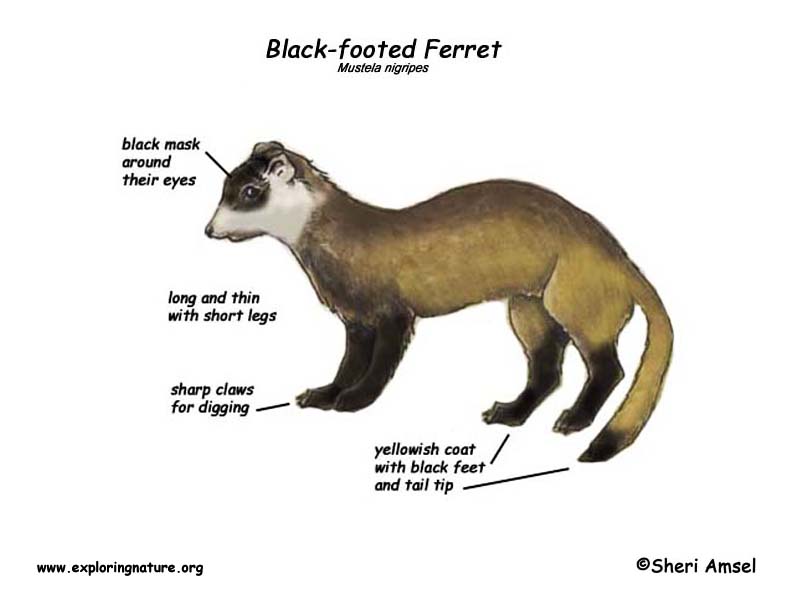

Thought to be extinct in the wild, they were reintroduced in Arizona, South Dakota, Wyoming, Montana, Utah, Colorado, and Mexico.
They live on the prairie grassland.
Including their tail, they can reach almost 2 feet long (56cm). They are long and thin with short legs and a yellowish coat with black feet and tail tip. They have a black mask around their eyes. They have sharp claws for digging.
They are active at night (nocturnal) hunting prairie dogs in their burrows and spend the day resting in the prairie dog burrows. They live alone except to mate.
They eat mostly prairie dogs, but also mice, voles and other small mammals.
They are killed by hawks, coyotes and man.
Females are pregnant for 6 weeks (gestation) when she has 3-6 kits. She cares for them through the summer. In the fall they go out on their own.
They can live for about 12 years in the wild. They are the most endangered mammal in North Ameica.
Kingdom: Animalia
Phylum: Chordata
Subphylum: Vertebrata
Class: Mammalia
Order: Carnivora
Suborder: Caniformia
Family: Mustelidae
Subfamily: Mustelinae
Genus: Mustela
Species: Mustela nigripes
When you research information you must cite the reference. Citing for websites is different from citing from books, magazines and periodicals. The style of citing shown here is from the MLA Style Citations (Modern Language Association).
When citing a WEBSITE the general format is as follows.
Author Last Name, First Name(s). "Title: Subtitle of Part of Web Page, if appropriate." Title: Subtitle: Section of Page if appropriate. Sponsoring/Publishing Agency, If Given. Additional significant descriptive information. Date of Electronic Publication or other Date, such as Last Updated. Day Month Year of access < URL >.
Amsel, Sheri. "Ferret (Black-footed)" Exploring Nature Educational Resource ©2005-2024. December 13, 2024
< http://exploringnature.org/db/view/Ferret-Black-footed >

